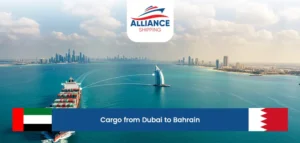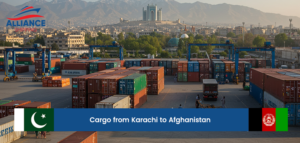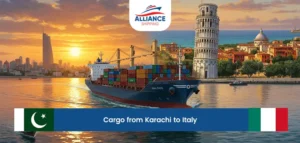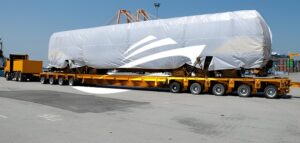In short, transshipment is the movement of cargo from one ship or vehicle to another during its trip to the final place. This often happens at a port or an inland hub where direct routes do not exist. I like to start with this simple line because it answers the core question quickly and gently, without jargon.
When you ask what is transshipment, imagine a parcel that changes trucks at a station to reach a town that the first truck cannot enter. The parcel keeps moving, but it switches vehicles so it can reach the right road. The same idea applies at sea, air, or river hubs. My fingers tap the keys as I write this, and the mouse moves between diagrams of ports — that small rhythm helps me keep the explanation plain and real.
Transshipment is common in shipping networks where direct sailings or flights are rare or costly. It helps connect small markets to big hubs. For shippers, knowing what transshipment means involves understanding the extra steps, time, and checks involved. Below, Alliance Shipping explains the why, the how, the types, the risks, and practical steps you can take if you plan to transship your cargo.
What is Transshipment: Clear Definition and Core Benefits
What is transshipment exactly? It is a formal process where goods are unloaded from one vessel, truck, or plane and then loaded onto another to continue their journey. This change can be inside the same port or at a nearby terminal. It is done for many reasons: route optimization, cost savings, port limitations, or connecting to smaller markets.
When carriers choose transshipment, they often combine cargo from several origins onto a single onward service. This creates efficient sailings or flights that serve many places. For example, a container may arrive on a large vessel at a hub port, then move to a smaller feeder vessel that calls at minor ports. The feeder completes the link, and the container reaches smaller towns that the bigger ship does not serve.
There are clear benefits to transshipment. It lowers costs for shippers who cannot fill an entire ship or plane. It increases route frequency and market reach. It also allows carriers to use large, cost-efficient mainline vessels and smaller feeder craft for local stops.
When is Transshipment Used? Practical Cases and Indicators
When is transshipment used in real life? It shows up when direct services are not available or not efficient. If a market is small, remote, or has shallow ports, direct ships or flights may not run there often. So carriers route goods via a larger hub. Transshipment is also used for cost control: a single large ship can carry cargo from many origins to a hub, then redistribute cheaply.
Another time is during schedule gaps. Carriers aim to keep predictable weekly sailings on main routes. To connect smaller lanes, they rely on transshipment to keep schedules tight and fixed. Seasonal demand also matters. During busy months, carriers may route cargo via hubs to balance space and timings.
Transshipment appears in different sectors. Automotive parts, retail goods, and small machinery often travel via hub ports. Airfreight transshipment is common at major airports that serve as continental hubs. My hands move across the mouse as I check route maps — this helps me see where goods switch lines. When planning a move, ask your forwarder: “Will my cargo be transshipped?” Knowing this helps you set delivery expectations and insurance choices.
How Transshipment Works: Step-by-Step Process
To see what transshipment is clearly, it helps to break down the steps. First, cargo reaches the initial port or airport and passes import or transit checks. The carrier or terminal records the cargo and schedules it for transfer. Next, the cargo is unloaded from the first vehicle or vessel and stored at the terminal until the next departure.
Handling at the hub is careful. Containers sit in yard stacks; pallets go to warehouses; vehicles may be moved to holding areas. Workers check seals, condition, and documentation. Then the cargo is loaded onto the next service — a feeder, truck, or plane — for the onward leg. Each step includes tracking, because shippers expect to know where goods are at all times.
From a human view, what is transshipment looks like this: a forklift beeps, a crane swings, and a worker notes a code on a clipboard or tablet. My keyboard clicks as I note timelines and forms. The process is routine but needs checks: customs transit papers, carrier handovers, and handling instructions. If any link breaks, delays follow. That is why carriers and terminals use tight coordination and clear paperwork to keep transshipment smooth.
Types of Transshipment and Real Examples
You can think of several types of transshipment when you study what is transshipment in practice. The main types include sea-to-sea transshipment (most common for containers), sea-to-land (where sea cargo is moved to trucks for inland delivery), and air transshipment at major airports.
A typical sea-to-sea example: a container from a small port is put on a feeder vessel to a regional hub, then loaded on a mainline vessel to a distant continent. This two-step move is textbook transshipment. For sea-to-land, goods are unloaded at a port and then go by road or rail to an inland hub for final distribution. Air transshipment often happens at big hubs where goods from smaller airports join long-haul flights.
There are also special cases: transshipment for transloading (changing cargo form, e.g., from container to bulk), and short-sea transshipment where cargo moves between nearby ports to avoid longer coastal routes. In each case, understanding what transshipment is helps you plan for time, cost, and handling needs. My mouse scrolls through case studies as I write, and those small actions help me find clear examples to share with you.
Risks, Rules, and Insurance: What You Must Know
You must also ask about risks and rules involved in transshipment. Every movement adds handling steps, and each step carries risk: damage, delays, misplacement, or customs holds. Terminals may require specific documentation for transit cargo, and laws differ by country.
Insurance needs care. Standard cargo cover might apply, but transshipment can introduce gaps or exclusions. You should declare transshipment to the insurer and confirm coverage for each leg and the terminal storage period. Also, check customs rules: some countries restrict transshipment for certain goods, such as hazardous items or restricted technology.
From a practical angle, what transshipment means is more eyes on paperwork. My keyboard taps as I list required permits, seals, and transit declarations. Keep copies of bills of lading, packing lists, and certificates. If a container is transshipped, note the new booking number and track it. Clear records and upfront insurance make transshipment safer and predictable.
Practical Checklist: Planning a Move That Involves Transshipment
If you plan a shipment and wonder what transshipment is for your cargo, use a short checklist. First, confirm if the carrier will transship and at which hub. Ask for the expected number of handovers. Second, check transit times and possible delays. Third, verify insurance covers all legs and terminal storage.
Also, check packaging and labeling. Goods that will be handled multiple times should be well-packed and clearly labeled. Take photos and document the condition before handover. Book early for slot certainty, and ask about tracking updates so you know the cargo’s location during each leg.
You can now set realistic delivery promises and inform your team or customers. We often type a simple timeline and print it for the driver and the warehouse – small steps that reduce confusion. Keep phone numbers for the carrier, terminal, and customs agent handy. That human contact often helps resolve small issues fast.
Final Thoughts – Answering “What is Transshipment” Clearly
To close, transshipment is the movement of cargo from one transport unit to another on the way to its final destination. It is a normal, useful practice in global trade that links big hubs to small markets. It saves cost and expands reach, but it also adds steps and demands clear paperwork.
Remember to ask your forwarder: “Will my goods be transshipped?” Confirm insurance, packing, and tracking. When you do these small checks, transshipment becomes a reliable tool in your shipping plan. As I finish, my fingers tap a last note, and the mouse clicks to save the checklist. That small human habit keeps everything clear, steady, and ready for the next move. What is Transshipment – now you know, and you can plan for it with simple, practical steps.






















